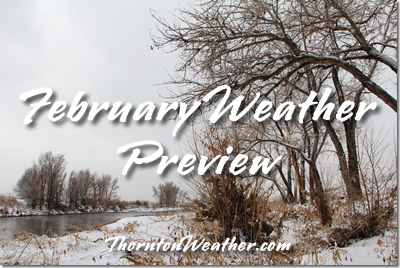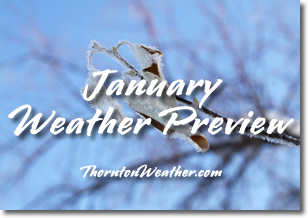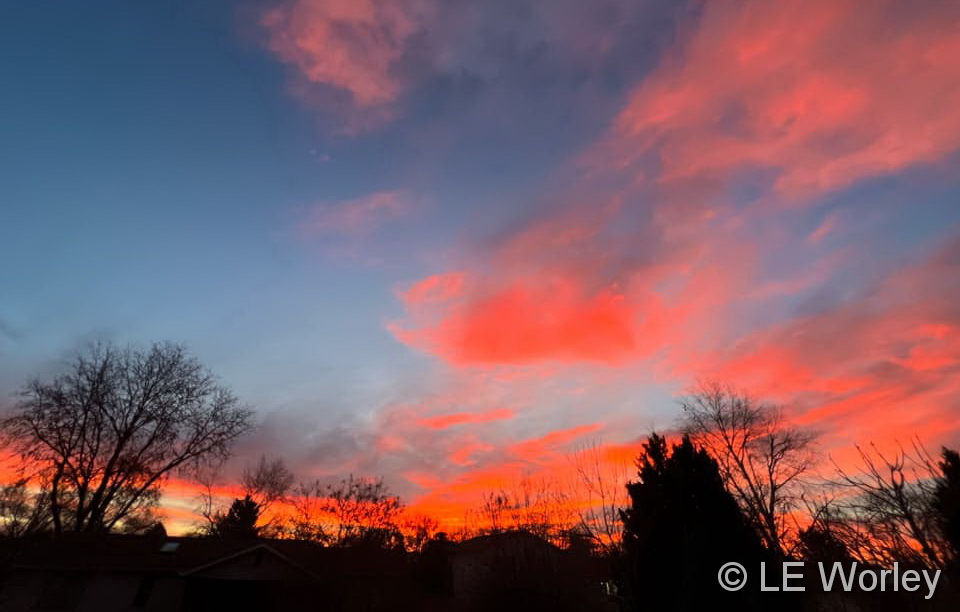
Winds along the Front Range this time of year can be a blessing and a curse all at once. Chinook’s can warm temperatures well above what they normally would but they can also cause a great deal of damage when they are at their hardest. We see these contrasts in our look back at this week in Denver weather history.
From the National Weather Service
7-10
In 1962…a major winter storm dumped 13.5 inches of snow on metro Denver. A foot of the snow fell on the 8th when northeast winds gusted to 30 mph. The storm was followed by an intense blast of very cold arctic air. Minimum temperature readings of 24 degrees below zero occurred on both the 9th and 10th. The temperature never reached above zero on the 9th when a maximum reading of 1 degree below zero was recorded. Temperatures were below zero for 37 consecutive hours.
8-9
In 1891…heavy dry snowfall totaled 9.7 inches over downtown Denver. Most of the snow…6.5 inches…occurred on the 8th when north winds were sustained to 12 mph with gusts to 20 mph.
In 1939…heavy snowfall totaled 6.7 inches in downtown Denver. The snowfall was the heaviest overnight…particularly during the early morning hours. The moist snow adhered to the north side of the instrument shelter and other objects to a depth of 2 inches. Snow accumulated on fences and trees to several inches. This was the greatest snowfall of the month that year. The greatest depth on the ground was 6.5 inches. North to northwest winds were sustained to 24 mph on the 8th and to 27 mph on the 9th.
8-10
In 1983…winds of 70 to 90 mph howled through Boulder. A wind gust to 100 mph was recorded on Fritz Peak near Rollinsville. A tree blown down by the wind damaged a house in eastern Boulder County. The strong winds developed behind a cold front late on the 8th and continued through the 10th. At Stapleton International Airport…west to northwest winds gusted to 49 mph on the 8th…to 45 mph on the 9th…and to 48 mph on the 10th.
9
In 1875…the all time lowest recorded official temperature in Denver…29 degrees below zero…occurred between 3:00 am and 4:00 am under clear skies with calm winds. The temperature climbed to zero at noon and to a high of 8 degrees at 3:00 pm.
In 1916…Chinook winds from the southwest sustained to 42 mph with gusts as high as 48 mph warmed the temperature to a high of 57 degrees.
In 1917…Chinook winds…southwesterly in direction…sustained at 43 mph with gusts to 48 mph warmed the temperature to a high of 55 degrees. The low temperature was only 43 degrees.
In 1950…strong west winds to 50 mph produced blowing dust… Which briefly reduced visibility to 3/4 mile at Stapleton Airport.
In 1957…west-northwest winds gusted to 51 mph at Stapleton Airport.
In 1988…a wind gust to 61 mph was recorded at Echo Lake. West winds gusted to only 16 mph at Stapleton International Airport.
In 1989…strong Chinook winds howled along the eastern foothills. A peak gust to 115 mph was recorded at the Boulder airport where a light plane was severely damaged when the wind flipped it over. Gusts reached 103 mph at Table Mesa in south Boulder. Homes in the city suffered damage to roofs…gutters…and siding. Fences were blown down…and windows in both homes and cars were broken. A radio station was off the air for 2 1/2 hours when the winds blew the top 80 feet off its 180-foot transmission tower. A school roof was partially torn off…and a few traffic signals were downed. Winds 60 to 80 mph were reported at Jefferson County Airport in Broomfield. West winds gusted to 47 mph at Stapleton International Airport.
In 1990…high winds buffeted the Front Range foothills for a second straight day. Wind gusts to 92 mph were recorded at Rollinsville. Wind gusts of 65 to 90 mph were noted in the Denver-Boulder area. No significant damage occurred. Northwest winds gusted to 38 mph at Stapleton International Airport where the maximum temperature reached 63 degrees.
In 2017…high winds developed in and near the Front Range Foothills. Peak wind gusts included: 90 mph near Pleasant View; 88 mph near Louisville; 87 mph near Gold Hill; 79 mph at the NCAR Mesa Laboratory; 76 mph at Glen Haven; 60 mph in Littleton and 58 mph in Arvada. Scattered outages affected approximately 2400 customers in Boulder and Jefferson Counties. In Berthoud…strong winds destroyed a barn. At Denver International Airport…a peak wind gust of 56 mph from the northwest was recorded.
9-10
In 1962…the low temperature plunged to 24 degrees below zero on both days.
In 1972…a west wind gust to 60 mph was recorded at Stapleton International Airport…while in Boulder a wind gust to 86 mph was recorded at the National Bureau of Standards. The roof of a house was blown off…and trees were blown down in Boulder. The high winds contributed to the damage from a building fire in Boulder.
In 2000…heavy snow and strong winds in the mountains spilled into the Front Range foothills. Ward…northwest of Boulder…received 9 inches of new snow. Wind gusts to 91 mph were measured in Golden Gate Canyon…with gusts to 77 mph at Loveland Ski Area and to 73 mph along State Highway 93 north of Golden. West winds gusted to 44 mph at Denver International Airport on the 9th.
In 2011…a winter storm brought moderate to heavy snowfall to areas in and near the Front Range Foothills and Palmer Divide. Storm totals included: 13 inches…3 miles south of Golden; 11.5 inches near Eldorado Springs…10.5 inches… 2 miles southwest of Boulder; 10 inches…3 miles southwest of Roxbourough State Park; 9 inches at Genessee…8.5 inches in Arvada…4 miles south-southeast of Bennett and Greenwood Village…8 inches…8 miles south of Elizabeth; 7 inches at Commerce City and 6.5 inches near Louisville and at Denver International Airport. Gusty winds produced snow drifts up to 2 feet deep over the Palmer Divide.
10
In 1893…strong west winds in Boulder and the adjacent foothills caused only minor damage. In Denver…northwest winds were sustained to 48 mph with gusts as high as 60 mph. The Chinook winds warmed the temperature to a high of 64 degrees and a low of only 40 degrees…which was a record high minimum for the date.
In 1911…southwest Chinook winds sustained to 44 mph warmed the temperature to a high of 60 degrees.
In 1932…the first thunderstorm ever officially recorded in Denver during January occurred in the early morning. The assistant observer heard two prolonged peals of thunder between 4:20 am and 4:25 am. Another off-duty observer was awakened by the thunder. Other people reported both thunder and lightning. Light snow was falling at the time. Pellets of graupel or hail were reported from some parts of the city. Snowfall totaled only 1.8 inches. Northwest winds gusted to 30 mph.
In 1962…as the temperature dipped to a frigid 24 degrees below zero…setting a new record minimum for the date… The pressure adjusted to sea level reached the highest ever recorded in Denver…31.24 inches (1057.8 mb). The altimeter setting reached 30.70 inches…and the actual station pressure recorded was 25.260 inches.
In 1988…strong winds occurred throughout the day in and near the foothills. Peak gusts to 85 mph were recorded at Rollinsville…84 mph at Echo Lake…and 64 mph in Boulder.
In 1990…a third consecutive day of 50 to 85 mph wind gusts occurred in and along the eastern foothills. A 5 mile portion of the Denver-Boulder turnpike was closed after clouds of blowing dust and gravel caused several multicar accidents near Broomfield. One 59-year-old woman was killed and two others injured. A wind gust to 81 mph was recorded at the nearby Jefferson County Airport. In Boulder…wind gusts to 85 mph were blamed for ripping off a portion of a roof on a house…as well as blowing out the large picture window. West winds gusted to 41 mph at Stapleton International Airport. The warm Chinook winds set a record high temperature of 71 degrees in Denver for the date.
In 1996…strong northwest winds developed behind a pacific cold front that moved rapidly across northeast Colorado. A peak wind gust to 64 mph was recorded at the Rocky Flats Environmental Test Facility in Jefferson County. North- northeast winds gusted to 38 mph at Denver International Airport.
Continue reading January 9 to January 15: This week in Denver weather history →
 February in Colorado typically brings to an end an extended period when average temperatures are at their lowest. Winter begins to loosen its grip and temperatures get warmer but precipitation is not a particularly common event during the month.
February in Colorado typically brings to an end an extended period when average temperatures are at their lowest. Winter begins to loosen its grip and temperatures get warmer but precipitation is not a particularly common event during the month.


 As we begin the new year the winter chill begins to set in. While January can see its share of extremes, the month historically sees stable temperatures and is usually relatively dry.
As we begin the new year the winter chill begins to set in. While January can see its share of extremes, the month historically sees stable temperatures and is usually relatively dry.